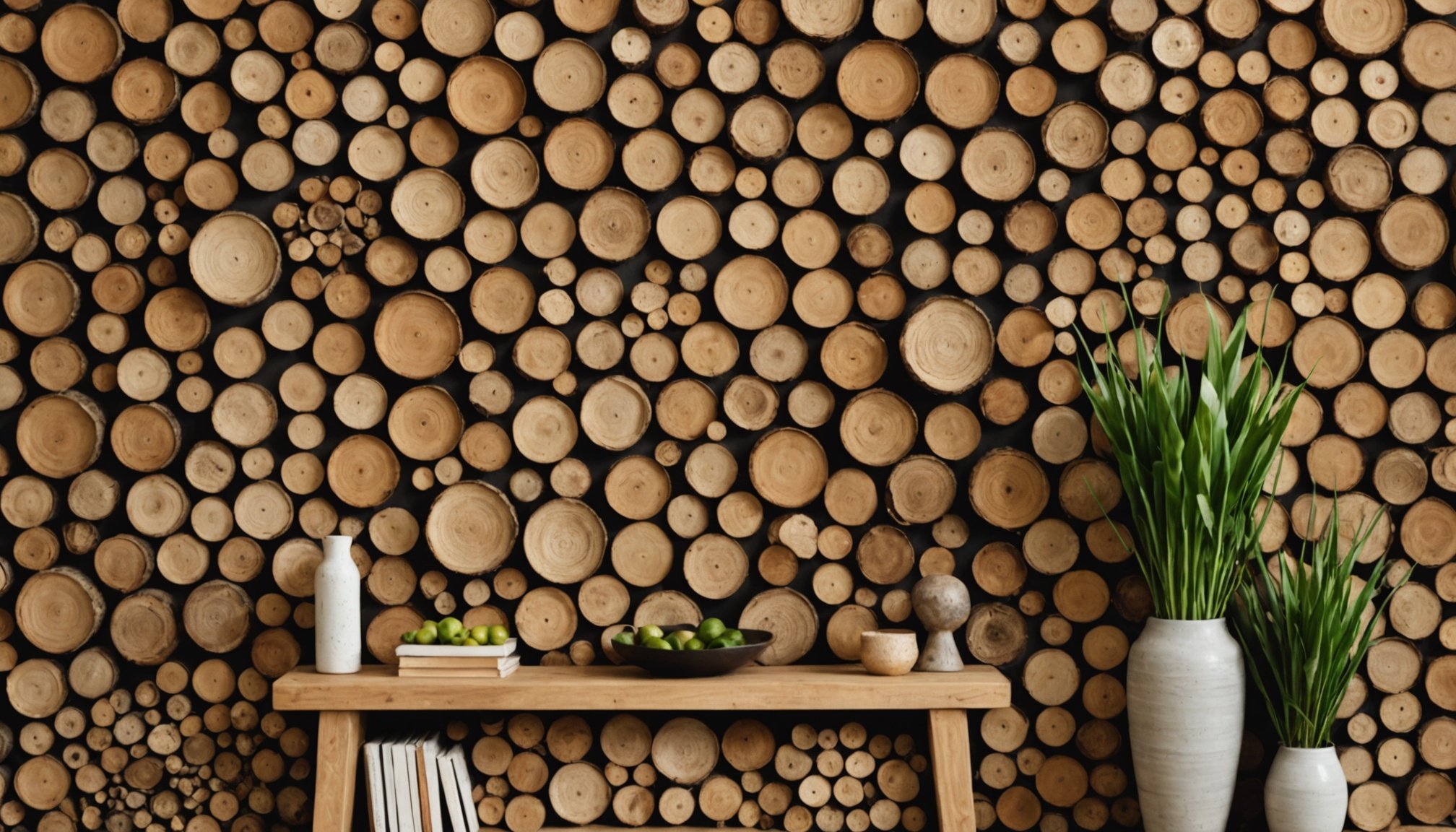Benefits of Natural Materials in Home Décor
Exploring the advantages of using natural materials in home décor unveils an array of benefits. Firstly, employing organic textures and colors can greatly enhance the aesthetic appeal of any living space. These elements often bring a sense of peace and harmony, connecting your interior to the tranquil vibes of the outdoors.
One of the key benefits is the promotion of sustainability through the use of ethically sourced resources. Sustainable design in décor not only supports environmental conservation but also often involves materials that are renewable and biodegradable, lessening the ecological footprint of your home.
In the same genre : Transform your healing with the no contact app today
Furthermore, the use of natural materials can improve indoor air quality. For example, materials like cork, cotton, and bamboo do not release harmful chemicals into the air, as some synthetic products might. This creates a healthier living environment, benefiting both your wellbeing and the planet.
Incorporating natural elements into your décor not only beautifies your home but also supports a sustainable design ethos. Embracing these materials represents a conscious lifestyle choice, celebrating health, beauty, and environmental responsibility, all within the cozy confines of your home. A home decorated with natural materials celebrates both aesthetics and ethics.
Topic to read : Essential Tips for Nurturing and Protecting Sensitive Eyes
Types of Natural Materials
Incorporating natural materials into home décor not only enhances aesthetics but also supports a sustainable lifestyle. Exploring eco-friendly options provides flexibility and durability without compromising on beauty.
Wood
A quintessential choice among the types of natural materials, wood adds warmth and elegance. With a plethora of species available, from oak to teak, wood is highly versatile. Sustainable sourcing is crucial; opting for FSC-certified products minimizes environmental impact. Proper maintenance, like regular polishing, can prolong its life.
Stone
Stone, often praised for its timeless appeal, offers both durability and sophistication. Granite and marble are popular choices due to their strength. When considering eco-friendly options, ensure that the stone is mined ethically to preserve natural habitats. Simple upkeep, such as sealing surfaces, maintains its charm.
Cotton
Used extensively in textiles, cotton is appreciated for its comfort and breathability. Choosing organically grown cotton further reduces ecological harm, aligning with sustainable home décor materials. To extend its longevity, wash using mild detergents and avoid high-temperature settings.
These materials, each with unique properties, offer an array of applications and benefits. Keen decision-making helps create a balanced, eco-conscious home environment, encouraging homeowners to embrace sustainable practices with confidence.
Visual Examples of Natural Materials in Home Décor
Natural materials can transform a space, adding a sense of warmth and tranquillity. In interior design, these elements provide a rich tapestry of textures and colours, creating inviting environments.
Several design styles showcase the seamless integration of natural materials. Scandinavian design, for instance, heavily relies on wood and stone, blending simplicity with functionality. This style embraces visual décor through its focus on minimalism and connection to nature. Similarly, rustic styles incorporate earthy hues and distressed woods, marrying old-world charm with contemporary living spaces.
Balancing natural elements with modern aesthetics requires a skillful touch. For contemporary settings, incorporating natural materials examples like jute or rattan can add depth without overwhelming sleek designs. These materials offer versatility, allowing them to blend seamlessly with modern furniture and metallic accents.
An illustration of this is a successful project in a Manhattan apartment, where reclaimed wood accents were paired with industrial lighting and steel fixtures. The outcome was a striking balance between rugged and urban design elements.
By drawing from these inspirational examples, homeowners can authentically integrate nature into their homes, ensuring a harmonious yet stylish environment.
Tips for Incorporating Natural Materials
Using natural materials in your home décor can infuse your space with a sense of calm and connection to nature. Here are some practical home décor tips to consider.
Practical Recommendations:
When integrating natural elements, blend materials that complement one another. For instance, pairing wooden furniture with stone or clay accents can create a harmonious balance. Ensure the colours align with your overall design.
Factors to Consider
Before selecting materials, think about durability and maintenance. Natural woods like oak or walnut are robust but may require regular care. Assess your home’s environment; excess moisture can impact materials such as wood and textiles.
Ideas for DIY Projects
Feeling creative? Try crafting your own design elements. Simple projects could include a wooden wall art piece or a stone-centric centrepiece. Here’s a quick idea: use driftwood to create a rustic shelf.
Incorporating natural materials is not only aesthetically pleasing but also environmentally friendly. Remember, simplicity and elegance often lie in choosing the right materials that reflect your personal taste. Experiment with textures and designs to discover what feels right for your home.
Environmental and Health Impacts
When it comes to eco-conscious living, choosing products made from natural materials can significantly reduce carbon footprints. Natural options, such as bamboo and organic cotton, require less energy during production compared to synthetic materials. This makes them a go-to choice for those prioritising environmental benefits. Besides, these materials usually come from renewable sources, enhancing their sustainability.
However, it’s important to address concerns regarding synthetic alternatives. Many of these products, often derived from petrochemicals, have been criticised for their negative environmental and health impacts. They tend to release harmful substances during production and disposal, contributing to pollution and health problems.
For those committed to an eco-friendly lifestyle, looking for certifications can be extremely helpful. Certifications like the Global Organic Textile Standard (GOTS) and the Forest Stewardship Council (FSC) label indicate materials have been responsibly sourced and manufactured with minimal environmental effect. These certifications assure consumers that the products they choose meet sustainable standards, promoting a healthier planet.
Additionally, these choices don’t just benefit the environment; they positively influence human health by reducing exposure to toxic chemicals commonly found in synthetic products. Embracing eco-friendly materials aligns with values of both environmental conservation and personal well-being.
Cost Considerations
When considering the cost of natural materials in your projects, it’s essential to weigh initial expenses against long-term benefits. Natural materials often have a higher upfront cost; however, their durability and sustainability can save money over time. This is a crucial factor to consider, especially for those looking to make a smart financial decision.
For budget-conscious consumers, there are several budget-friendly options available. Materials like bamboo and reclaimed wood offer natural beauty at a lower price point. By exploring these options, you can achieve the aesthetic appeal of pricier materials without overspending.
Investing in quality materials is often more cost-effective down the road. Choosing materials with a high investment value, such as natural stone or high-grade timber, may seem costly initially. However, these options usually last longer and require fewer replacements, thus reducing future expenses.
In conclusion, understanding the balance between cost and quality is vital. Opting for the right natural materials not only supports sustainability but also aligns with financial goals in the long run. As you consider these choices, remember that investing wisely now can lead to significant savings in the future.











